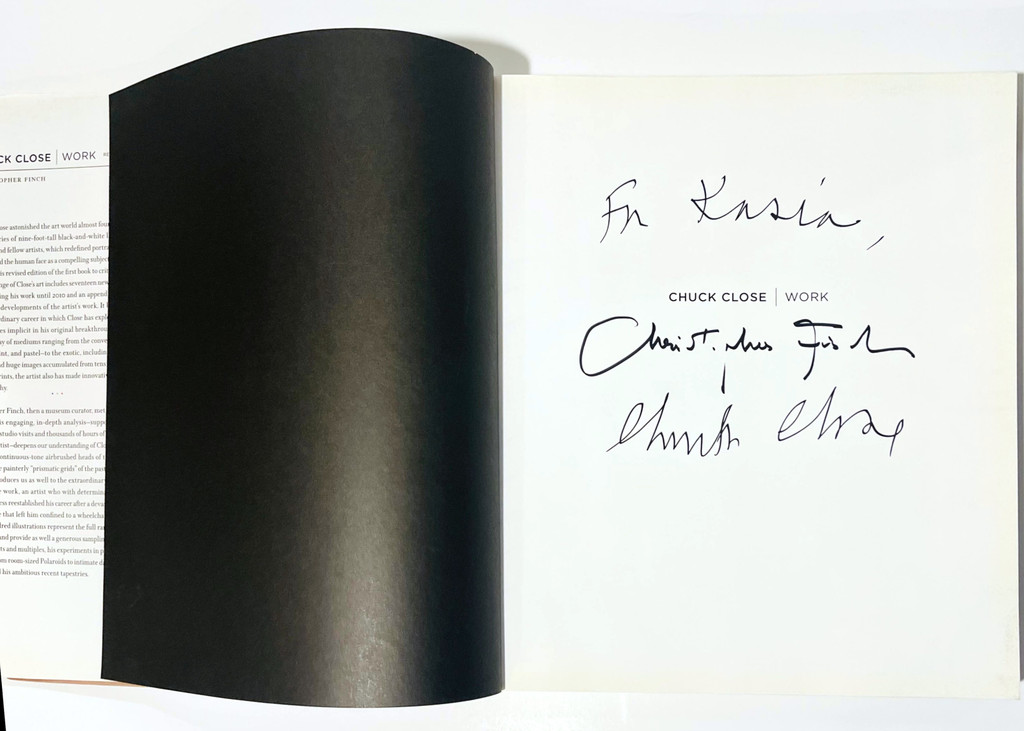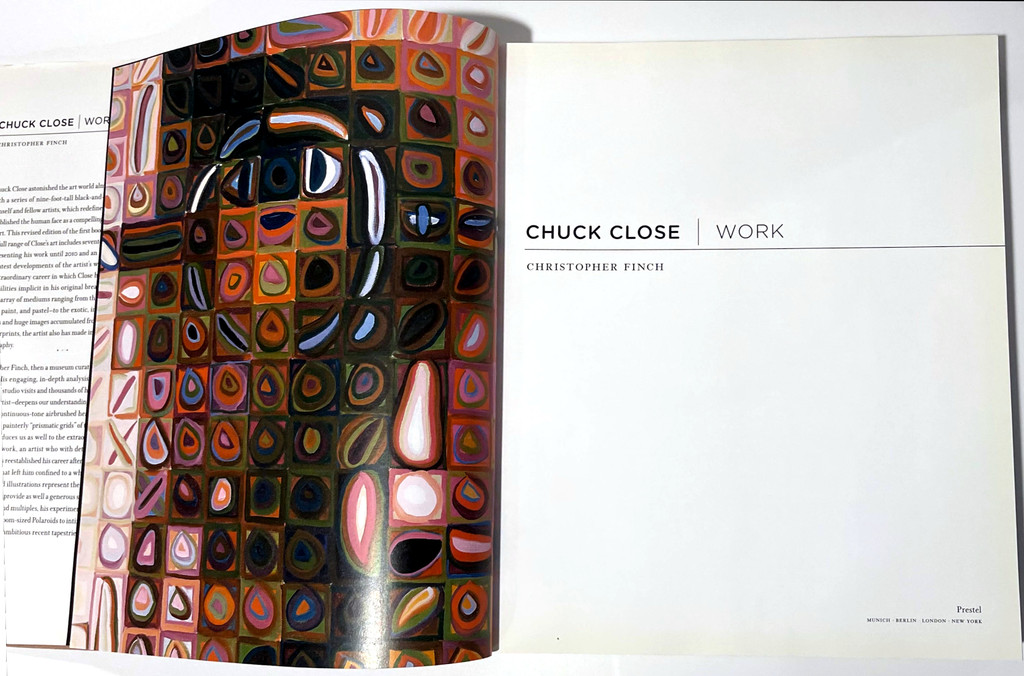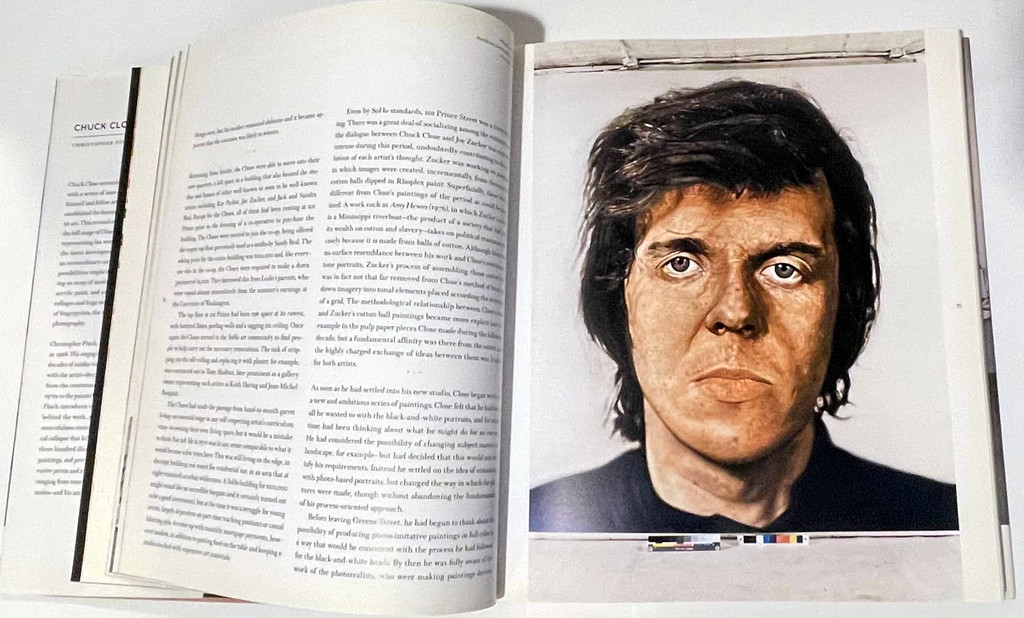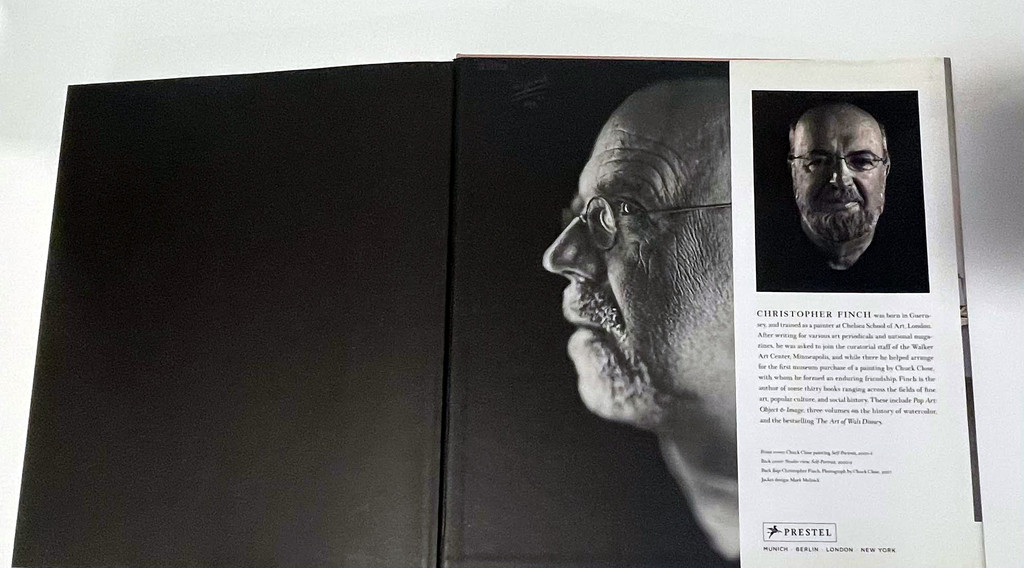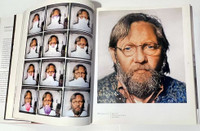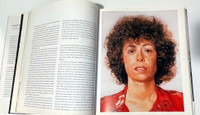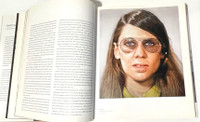
An Educated Collector is Our Best Client
In business for nearly two decades, we are a well established, popular contemporary art boutique specializing in expertly chosen, blue chip prints, multiples, uniques, books, ephemera and merchandise at different price points, with a focus on the secondary market. Please click on the "Contact Us" button at the bottom of this page for questions about any work, pricing and/or to arrange to visit our showroom/gallery - located in between Manhattan's Flatiron and Chelsea Flower Districts.
Chuck Close, CHUCK CLOSE WORK (hand signed by both Chuck Close and Christopher Finch), 2010
CONTACT GALLERY FOR PRICE
Description
Chuck Close
CHUCK CLOSE WORK (hand signed by both Chuck Close and Christopher Finch), 2010
Hardback monograph with dust jacket (hand signed and inscribed by both artist and author)
Hand signed and inscribed by both Chuck Close and Christopher Finch on the half title page
13 1/2 × 11 3/4 × 1 3/4 inches
unframed
Provenance:
signed by the artist and author for the previous owner during a special event at the Strand bookshop in NY
This hardback monograph with dust jacket is hand signed and inscribed to Kasia by both Chuck Close and Christopher Finch on the half title page during a special event at the Strand bookshop in NY.
Book information:
Publisher: Prestel, 2010
English; Hardcover; 352 pages with 365 color and black and white illustrations.
Publisher's blurb:
Chuck Close reinvented portraiture almost four decades ago with a series of nine-foot-tall, black-and-white likenesses of himself and fellow artists, which astonished an art world dominated by Minimalism and Conceptualism. Close has since explored the possibilities implicit in his original breakthrough in an array of media. This lavish, large-format volume deals with all aspects of Close's career and places them in a biographical context. Christopher Finch's insight into Close's achievement comes by way of hundreds of studio visits and thousands of hours of conversation since he met Close in 1968. The author provides an engaging, in-depth analysis of Close's portraits on canvas, from the continuous-tone airbrushed heads of the 1960s and 1970s to the painterly "prismatic grids" of the past decades. Featuring 365 illustrations, the book surveys almost all of Close's paintings, including his most recent work, together with a selection of prints and multiples and examples of his photographic oeuvre. This beautifully designed volume reveals not only the variety of pictorial strategies Close has devised, but also the extraordinary personality of the artist behind the work.
About Chuck Close:
Chuck Close is known for his innovative conceptual portraiture, depicting his subjects, which are transposed from photographs, into visual data organized by gridded compositions.
Throughout his childhood and adolescence, Close used art as a means of navigating a learning disability. He continued to develop his artistic skills through private art lessons, drawing and painting from live models. As a student at the University of Washington (BA, 1962), and then at Yale (BFA 1963; MFA 1964), he began to emulate the styles of Arshile Gorky and Willem de Kooning, considering himself a third-wave Abstract Expressionist and as he explored this vocabulary he pivoted from biomorphism to figuration.
After studying at the Akademie der Bildenden Künste in Vienna (1964) on a Fulbright grant, Close returned to the United States in 1965. He taught painting at the University of Massachusetts, Amherst, where he received his first solo exhibition in 1967. Seeking to break from the gestural style that had characterised his student work, Close shifted toward Pop-inflected figuration before embracing the tools of commercial art and illustration. Basing his paintings on photographic imagery, Close reduced his palette to black and white, culminating in his large-scale painting Big Nude (1967). His 1967 solo exhibition featured paintings of male nudes, proving controversial and ultimately resulted in a landmark court case that sought to extend freedom of speech to the visual arts.
On relocating to New York, Close continued to explore realism, painting black-and-white photographic portraits of his family and friends onto large-scale canvases in precise detail, applying paint with an airbrush. He participated in his first New York exhibition in 1970 at Bykert Gallery alongside Lynda Benglis and Richard Van Buren. During this time, the Walker Art Center, Minneapolis, acquired Big Self Portrait (1967) directly from his studio. Close relinquished his strictly monochromatic palette in 1970 and began employing a three-color process as well as various imposed systems and techniques. A year later he received his first major museum exhibition Recent Work at the Los Angeles County Museum of Art (1971).
Exploring different modes of representation, Close began in the late 1970s to make explicit use of a grid system or an irregular grid based on a physical relationship to his support. The resulting works read like pixelated mosaics wherein the viewer’s perception blends distinct areas of juxtaposed color—be it layered shapes of colors, fingerprints, or lines—into a unified image.His first retrospective Close Portraits was organized by the Walker Art Center, Minneapolis in 1980, and traveled to the St. Louis Art Museum, Missouri; Museum of Contemporary Art, Chicago; closing at the Whitney Museum of American Art. In 1988, Close was paralyzed following a rare case of spinal artery collapse. Through rehabilitation, he regained his ability to paint by using a brush-holding device strapped to his wrist and forearm. Beginning in 1991, he continued his examinations of portraiture through productions of silk tapestries and, since 2003, has furthered this investigation, producing editions of large-scale Jacquard tapestry portraits.
Constantly revitalizing his practice by challenging modes of representation, Close’s oeuvre encompasses various forms of painting, printmaking, drawing, collage, daguerreotype and Polaroid photography, and, most recently, tapestries.
Courtesy of Pace Gallery
About Christopher Finch:
Christopher Finch was born in Guernsey in the British Channel Islands, and now lives in Los Angeles. He is an artist and a photographer who has had one person shows in New York and California, and he is the author of almost thirty non-fiction books including the best sellers Rainbow: the Stormy Life of Judy Garland, The Art of Walt Disney, Jim Henson: the Works, and Norman Rockwell's America. Recently he has embarked on a series of noir-inflected mystery novels set in New York in the late 1960s and featuring the private investigator Alex Novalis. The first of these, Good Girl, Bad Girl, is to be published by Thomas & Mercer in 2013. These books draw on his own experiences in the New York art world at a time when today's SoHo was an urban wilderness with rats frolicking in the gutters and artists eking out a living in barren loft spaces. He is married to Linda Rosenkrantz, an author and a co-founder of the website Nameberry.




